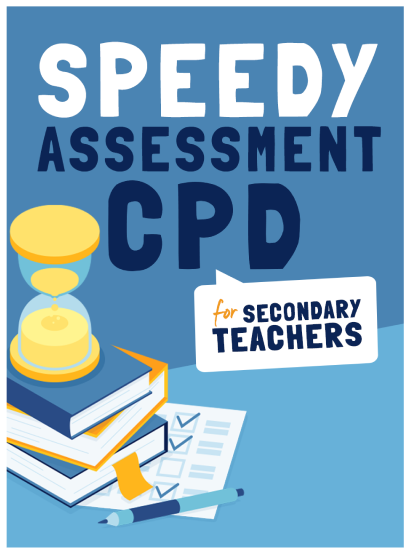EEF feedback – Evidence-based advice for teachers

Dr Niki Kaiser explains how the Education Endowment Foundation’s
evidence-informed feedback recommendations can improve your lessons

I can still remember the time when I had to write a personal statement for a job application. I asked a trusted colleague for some feedback on what I’d written. They said, “I’m sorry, Niki – but this reads like an Oscars acceptance speech!”
When I re-read my statement back I realised they were right. However, I wasn’t sure how to change the style and make it better. Luckily, they went on to also gave me some constructive advice for improving it.
Importantly in this instance, I had trusted my colleague. This in turn meant that their comments were well-received, and that I was motivated to act on them. All important aspects of effective feedback.
As the EEF feedback guidance explains, feedback is information we give to pupil(s) about their performance that aims to improve learning.
The guidance contains some sound principles for ensuring that feedback is effective. However, it’s important to understand that they’re not instructions. This is because feedback can look very different depending on the situation, subject, class, topic, day or individual pupil.
There and then
One key recommendation within the guidance is that you should appropriately time feedback and focus on moving learning forward. In a practical lesson, for example, I would need to provide immediate feedback if I saw that a student had left a beaker containing an acidic solution close to the edge of the bench.
However, I might also prompt them to think about the hazards associated with acids. I might ask them to articulate how they’d arrange their practical equipment more safely next time. This supports both self-regulation and subject knowledge (as well as preventing potential accidents), thus helping the student to progress.
Another possible reason for immediate feedback might be to prevent the embedding of incorrect ideas. If, for example, a pupil answers a question in a lesson using the word ‘burned’ when they actually mean ‘melted’ or ‘reacted’, I’d try to pick up on it straight away.
I could simply correct them. However, I might also ask them to think of the correct word themselves, or prompt them to think about the difference between melting and burning at a particle level. This is so that they’re able to differentiate between them in a new context.
Trust teachers
In these examples, I, the class teacher, take decisions around the timing and format of feedback. I respond to each situation and pupil individually, as even the most detailed school feedback policy would struggle to anticipate every possible case and context. This underlines the importance of trusting teachers to understand and enact the principles of effective feedback, rather than demanding adherence at all times to a set of overarching rules.
Immediate verbal feedback, given continuously, can be very effective, but there will be times when written feedback is more appropriate. However you choose to give feedback, you must weigh up the need for responsiveness and a sustained impact with workload considerations. Would your time spent writing feedback be better spent planning next steps for the class?
You should tailor feedback to the context, with classes, pupils, subjects and topics all influencing the choices we make. If you understand the principles characterising effective feedback, it will give you the flexibility to make the most of opportunities as they arise.
EEF feedback key principles
How you present feedback matters
This includes practical considerations – such as making time for pupils to act on feedback, or ensuring they can read it – but also awareness of our relationships with pupils. I need to make sure my students trust me, understand that I care about them doing well, and believe in themselves that they can.
Remember your learning intentions
Feedback must also be specific to the learning intentions set during initial teaching. I’ll often use past examiners’ reports to anticipate topics and questions students will likely struggle with, and then structure tasks and feedback opportunities around them.
Support feedback with concrete examples
If I’m feeding back on how students ought to set out a calculation, I might talk through the decisions I would make by working through a similar example under a visualiser.
Dr Niki Kaiser is a secondary science teacher and science specialist at the Education Endowment Foundation. Follow her at @chemDrK. For more information, visit educationendowmentfoundation.org.uk











